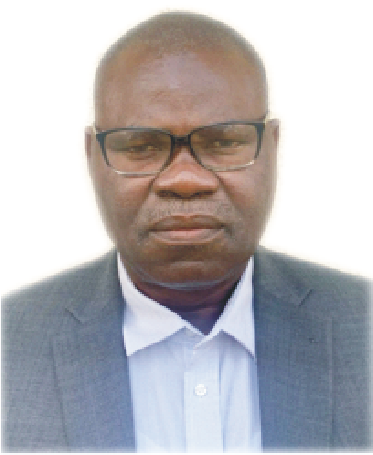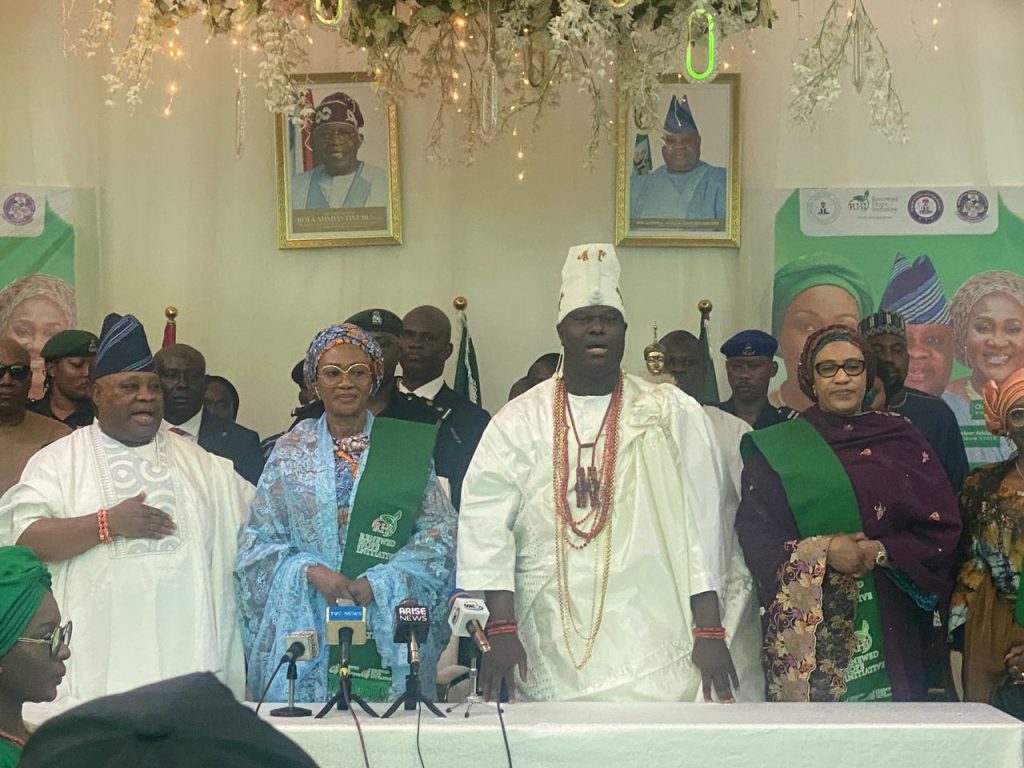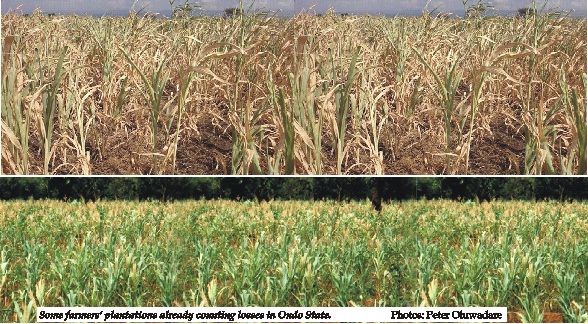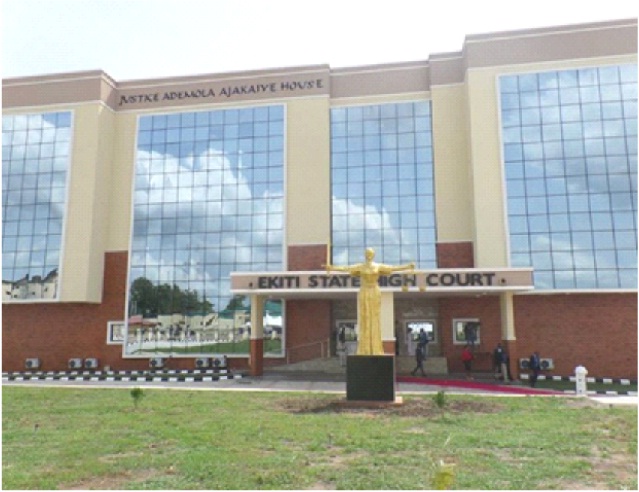Are newspapers’ articles admissible as evidence in court?
Runsewe Solomon
Now, in law, newspapers’ reports are not generally admissible as evidence of facts contained in them. … The statements reported are therefore, in law, deemed to be hearsay by virtue of Section 37 of the Evidence Act, 2011 and therefore inadmissible as the truth of the statements made therein.
Under Federal Rule of Evidence 902(6), newspapers and periodicals are self-authenticating; in other words, they are admissible into evidence without a writer, editor, or other witness testifying to their authenticity.
The Hope Classics spoke with some legal practitioners on the matter. Excerpts;
 Akinyemi Omoware Esq
Akinyemi Omoware Esq
Newspaper, like every document in law, is an admissible document. Equally, like every document, admissibility of newspaper in evidence is subject to some defined conditions.
By the provisions of the National Library Act, every publisher is mandated to keep at least, three copies of book or publications published in Nigeria in the National Library for public use. By this provision, newspaper can rightly, for the purpose of admissibility in law, be categorised as public document. The legal consequence of this categorisation is that for a newspaper to be admitted in evidence, the legal requirement for admissibility of public document must be met.
Generally, all original documents are admissibility in law if other conditions precedent are satisfied. However, from the decision of our courts, for newspaper to be admissible, it must be certified by the Library Board regardless of whether it is original or not. It is assumed that the original is the copy submitted to the National Library. Hence, same must be clearly certified by the officer of the Board in accordance with Evidence Act.
One may however ask whether privately published newspapers equally fall within the definition of public documents which require certification for it admissibility. There are split decisions of our court. However, it has been argued that the decision which makes privately published newspaper a public document is more in accord with our law. This is because, even a privately published newspaper is required to be submitted to the National Library. For it admissibility, it must be produced from proper custody, hence the need to certify same for its admissibility.
It is therefore my conclusion that newspaper, like any other document as defined by Evidence Act, 2011, is admissible in evidence subject to meeting required conditions provided by law.
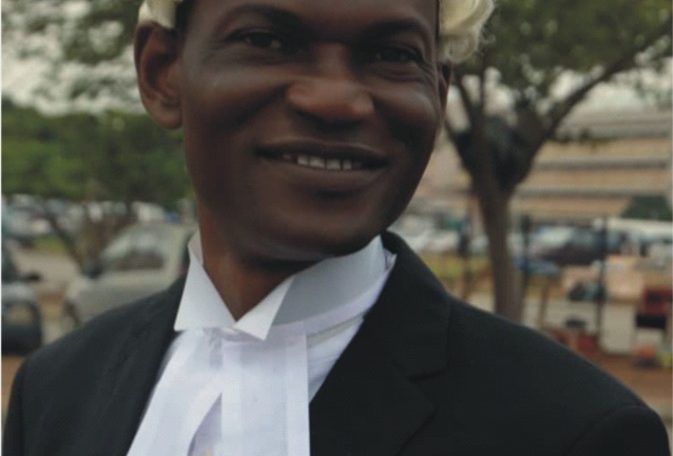
Segun Oni ESQ
I will like to correct an erroneous assumption that newspaper publication is always tainted with lies, this is not correct as journalists do a lot of diligent investigations before coming out to furnish the public with their findings. The veracity of every statement or information gathered must be proved before one starts spreading the fake news, hence, one will become a rumour peddler. A newspaper is classified as a document and a document can be tendered in the court of law but there are steps to be adhered to as stipulated in our Evidence Act of 2011 before it can be admissible.
Admissibility of documents in any claim is not something that is treated with triviality as it helps to unravel the mystery behind pending matters, therefore, it is of paramount importance and due attention must be given to this. Of course, there are laid down procedures in the Evidence Act, 2011. The Evidence Act in Section 20, defines admission as a statement, oral or documentary, or conduct which suggests any inference as to any fact, and which is made by any of the persons, and in the circumstances mentioned in this act.
Therefore, newspaper will fall under the public document.
According to Phipson, evidence means the testimony, whether oral, documentary or real, which may be legally received in order to prove or disprove some facts in dispute.
Evidence is used to prove or disprove a statement or fact or any document as the case may be. A newspaper is produced by a computer, so it falls under the computer generated documents, so we see:
Section 84(1) of the Evidence Act, the admissibility of computer generated documents is subject to the fulfillment of certain conditions. May I reproduce the said provision for convenience:
84(1): In any proceedings, a statement contained in a document produced by a computer shall be admissible as evidence of any fact stated in it of which direct oral evidence would be admissible, if it is shown that the conditions in Subsection (2) of this Section are satisfied in relation to the statement and computer in question.
84 (2): The conditions referred to in Subsection (1) of this Section are;
(a) that the document containing the statement was produced by the computer during a period over which the computer was used regularly to store or process information for the purposes of any activities regularly carried on over that period, whether for profit or not, by anybody, whether corporate or not, or by any individual;
(b) that over that period there was regularly supplied to the computer in the ordinary course of those activities information of the kind contained in the statement or of the kind from which the information so contained is derived;
(c) that throughout the material part of that period the computer was operating properly or, if not, that in any respect in which it was not operating properly or was out of operation during that part of that period was not such as to affect the production of the document or the accuracy of its contents, and
(d) that the information contained in the statement reproduces or is derived from information supplied to the computer in the ordinary course of those activities.
Evidence of the functionality of the computer as required by Section 84 is not exclusive to a certificate of compliance/identification. Such evidence can be given orally by calling a witness who is the maker of the document and note that where a maker of the newspaper gives an oral evidence, tendering the paper may be quite unnecessary.
Finally, section 83 of the Evidence Act talks about the admissibility of Documentary Evidence generally:
(83)1. In a proceeding where direct oral evidence of a fact would be admissible, any statement made by a person in a document which seems to establish that fact shall on production of the original document, be admissible as evidence of that fact if the following conditions are satisfied-Provided that the condition that the maker of the statement shall be called as a witness need not be satisfied if he is dead, or unfit by reason of his bodily or mental condition to attend as a witness, or if he is outside Nigeria and it is not reasonably practicable to secure his attendance, or if all reasonable efforts to find him have been made without success.
a. If the maker of the statement either-
(i). had personal knowledge of the matters dealt with by the statement
or
(ii). where the document in question is or forms part of a record purporting to be a continuous record made the statement (in so far as the matters dealt with by it are not within his personal knowledge) in the performance of a duty to record information supplied to him by a person who had, or might reasonably be supposed to have personal knowledge of those matters and
b. if the maker of the statement is called as a witness in the proceeding:
2. In any proceeding, the court may at any stage of the proceeding, if having regard to all the circumstances of the case it is satisfied that undue delay or expense would otherwise be caused, order that such a statement as is mentioned in subsection (1) of this section shall be admissible as evidence or may, without any such order having been made admit such a statement in evidence notwithstanding that-
a. the maker of the statement is available but is not called as a witness and
b. the original document is not produced, if in lieu of it there is produced a copy of the original document or of the material part of it certified to be a true copy in such manner as may be specified in the order or as the court may approve, as the case may be.
3. Nothing in this section shall render admissible as evidence any statement made by a person interested at a time when proceedings were pending or anticipated involving a dispute is to any fact which the statement might tend to establish.
4. For the purposes of this section, a statement in a document shall not be deemed to have been made by a person unless the document or the material part of it was written, made or produced by him with his own hand, or was signed or initialed by him or otherwise recognized by him in writing as one for the accuracy of which he is responsible.
 Funmilola Akinpelu, Esq
Funmilola Akinpelu, Esq
The court of law requires several evidence and witnesses to be present before the court for proving the statement and accusation. People believe whatever is written in the newspaper is to be true and act accordingly.
There is a procedure that is to be followed by every court before reaching the decision. Filing of the suit, the appearance of accused, evidence, framing of charges, trial examination, questioning of accused under Section 313 of Code of Criminal Procedure, 1973, arguments in both the side and at last judgment.
Even tribunals are required to follow the principle of natural justice though they are not required to follow the Code of Civil Procedure, (CPC) 1908 and Code of Criminal procedure, 1973 strictly, to ensure that justice has been delivered in a fair, reasonable, and just manner. The evidence in the court follows a hierarchy order to prove the allegations. Primary evidence under Section 62 of the Indian Evidence Act, 1872 holds the highest position whereas hearsay evidence is permitted only on strict conditions.
A primary source of evidence includes historic or legal documents, experimental observations and statistical data of the survey, pieces of creative writing, interviews, blogs, etc. Hence, a newspaper report can be called primary evidence if it has an original copy without any views of further interpretation.
Secondary evidence is denied under Section 63 of the Indian Evidence Act, 1872. It is admissible by the court when there is not any primary evidence. This evidence describes analyses and interprets upon the primary sources. Sometimes, external sources mislead the evidence which makes it a less reliable source of evidence. Thus, newspaper articles, journals, and magazines can only be considered secondary evidence.
In certain circumstances, the court allows hearsay evidence. These exceptions are given under Section 6 and Section 32 of the Indian Evidence Act, 1872.
Section 6 defines “the rule of Res Gestae”, which says that there are certain facts that are so connected with the fact in issue they form a part of the same transaction. Such facts are referred to as relevant facts and are admissible in the court of law.
Section 32 defines the ”Dying Declaration” that implies a written or verbal statement of being admissible on behalf of the person who is dead or is incapable of giving the evidence, or who cannot be found. Therefore, hearsay evidence is not admissible in the court with getting clear and justifiable reason as to its credibility.
Newspapers offered in evidence as proof of the facts recited therein are out-of-court declarations generally held to be inadmissible under the hearsay rule.’ However, in a recent decision, the Court of Appeals for the Fifth Circuit held that an exception to this exclusionary rule will be made where the evidence in question is necessary and the circumstances under which the declaration was made provide guarantees of trustworthiness. In Dallas County v. Commercial Union Assur. Co., a county in Alabama, following the collapse of its courthouse on July 7, 1957, sought to recover on a lightning insurance policy, contending that the collapse was caused by lightning which had struck the courthouse on July 2.
The plaintiff attributed char in the debris to lightning. Denying liability, the defendant claimed that lightning had not struck the courthouse and that the collapse was caused by structural weaknesses.
To explain the presence of char, the defendant introduced expert testimony indicating a fire at some earlier date and offered in evidence a June 9, 19O1, copy of the local newspaper, which contained an anonymous article reporting a fire in the then unfinished tower.
The federal district judge admitted the document as “part of the records” of the newspaper company over the plaintiff’s objection that this was hearsay evidence. On appeal from judgment on a jury verdict for the defendant, the plaintiff assigned as error the admission of the newspaper into evidence.
The Court of Appeals affirmed, noting that “the law governing hearsay is somewhat less than pellucid.” Preferring not to “characterized this newspaper as a business record, nor as an ancient document,” nor as any other readily identifiable and happily tagged species of hearsay exception,”‘ the court held the newspaper admissible because “it is necessary and trustworthy, relevant and material, and its admission is within the trial judge’s exercise of discretion in holding the hearing in bounds.”
The Court of Appeals stated that it could find no cases clearly on point but observed that “there is no procedural canon against the exercise of common sense in deciding the admissibility of hearsay evidence.”
Therefore, the court declared that it would apply general principles of relevancy and materiality, being guided in its deliberations by Rule 43(a) of the Federal Rules of Civil Procedure, which “affirmatively expands the scope of admissibility.”
Utilizing this approach, the court was able to base its decision upon an examination of the fundamental rationale of the hearsay rule and the factors justifying an exception therefrom.’
The strongest objection to the admission of hearsay evidence is that the offeror’s opponent has no opportunity to cross-examine the original declarant.’
Therefore, the opponent cannot test the declarant’s perception, correctness and comprehensiveness of memory, power of intelligible expression, and sincerity.” However, where these testimonial dangers are not present because of the circumstances under which the declaration was made and where the ascertainment of truth would be greatly aided by relevant and material testimony, exceptions to the exclusionary hearsay rule have been recognized. Thus, Wigmore has pointed out that each established exception to the hearsay rule does satisfy in varying degrees, the prerequisites of necessity for the evidence and circumstantial guarantee of its trustworthiness.”
The requirement of necessity for the evidence is most emphasized in those exceptions admitting facts recited in ancient documents”, and declarations as to ancient boundaries’ or matters of family, community, and general history. The admission of such evidence is usually deemed “necessary” only because of the death or unavailability of the original declarant at the time of trial. Yet, only “reasonable inconvenience” is required for some types of hearsay declarations affording an unusually strong guarantee of trustworthiness.”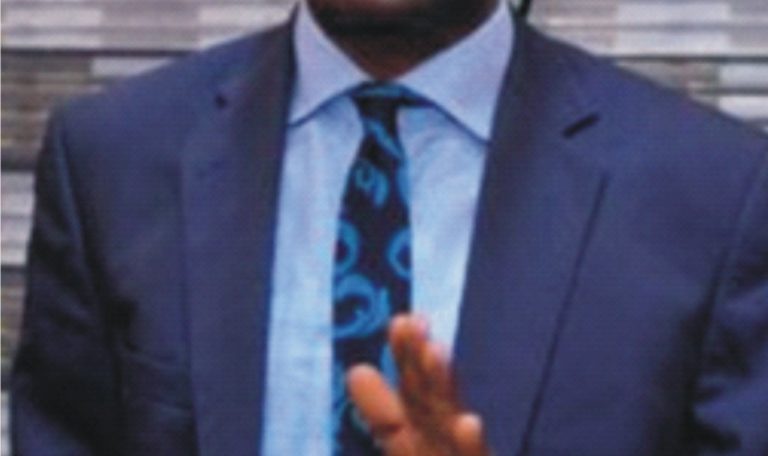 Wemimo Ajegbemiga Esq
Wemimo Ajegbemiga Esq
Newspapers offered in evidence as proof of the facts recited therein are out-of-court declarations generally held to be inadmissible under the hearsay rule.’ However, in a recent decision, the Court of Appeals for the Fifth Circuit held that an exception to this exclusionary rule will be made where the evidence in question is necessary and the circumstances under which the declaration was made provide guarantees of trustworthiness. In Dallas County v. Commercial Union Assur. Co., a county in Alabama, following the collapse of its courthouse on July 7, 1957, sought to recover on a lightning insurance policy, contending that the collapse was caused by lightning which had struck the courthouse on July 2.
The plaintiff attributed char in the debris to lightning. Denying liability, the defendant claimed that lightning had not struck the courthouse and that the collapse was caused by structural weaknesses.
To explain the presence of char, the defendant introduced expert testimony indicating a fire at some earlier date and offered in evidence a June 9, 19O1, copy of the local newspaper, which contained an anonymous article reporting a fire in the then unfinished tower.
The federal district judge admitted the document as “part of the records” of the newspaper company over the plaintiff’s objection that this was hearsay evidence. On appeal from judgment on a jury verdict for the defendant, the plaintiff assigned as error the admission of the newspaper into evidence.
The Court of Appeals affirmed, noting that “the law governing hearsay is somewhat less than pellucid.” Preferring not to “characterized this newspaper as a business record, nor as an ancient document,” nor as any other readily identifiable and happily tagged species of hearsay exception,”‘ the court held the newspaper admissible because “it is necessary and trustworthy, relevant and material, and its admission is within the trial judge’s exercise of discretion in holding the hearing in bounds.”
The Court of Appeals stated that it could find no cases clearly on point but observed that “there is no procedural canon against the exercise of common sense in deciding the admissibility of hearsay evidence.”
Therefore, the court declared that it would apply general principles of relevancy and materiality, being guided in its deliberations by Rule 43(a) of the Federal Rules of Civil Procedure, which “affirmatively expands the scope of admissibility.”
Utilizing this approach, the court was able to base its decision upon an examination of the fundamental rationale of the hearsay rule and the factors justifying an exception therefrom.’
The strongest objection to the admission of hearsay evidence is that the offeror’s opponent has no opportunity to cross-examine the original declarant.’
Therefore, the opponent cannot test the declarant’s perception, correctness and comprehensiveness of memory, power of intelligible expression, and sincerity.” However, where these testimonial dangers are not present because of the circumstances under which the declaration was made and where the ascertainment of truth would be greatly aided by relevant and material testimony, exceptions to the exclusionary hearsay rule have been recognized. Thus, Wigmore has pointed out that each established exception to the hearsay rule does satisfy in varying degrees, the prerequisites of necessity for the evidence and circumstantial guarantee of its trustworthiness.”
The requirement of necessity for the evidence is most emphasized in those exceptions admitting facts recited in ancient documents”, and declarations as to ancient boundaries’ or matters of family, community, and general history. The admission of such evidence is usually deemed “necessary” only because of the death or unavailability of the original declarant at the time of trial. Yet, only “reasonable inconvenience” is required for some types of hearsay declarations affording an unusually strong guarantee of trustworthiness.”

